Stuart Forster interviews Guest Service Manager Ira Young aboard the Rocky Mountaineer train about working aboard the luxury rail service in western Canada.
Disclosure: The author of this post was invited to travel as a guest of the Rocky Mountaineer, which did not review or approve this article. Some of the links and banners below are affiliate links, meaning, at no additional cost to you, I will earn a commission if you click through and make a purchase.
The landscapes that can be viewed while travelling in the Rocky Mountaineer train, the luxury rail service with four routes in Canada and the USA draw travellers from around the world. At points of interest during the journey, members of the guest experience team pick up a mic to tell anecdotes and convey snippets of information.
That aspect of the Rocky Mountaineer’s two-day First Passage to the West journey, between Vancouver and Banff, made a positive impression on me. The presentation styles of guest experience team members were fluid and natural. Not one of the team working in the bi-level GoldLeaf car that I travelled in gave the impression that they were reciting a script.
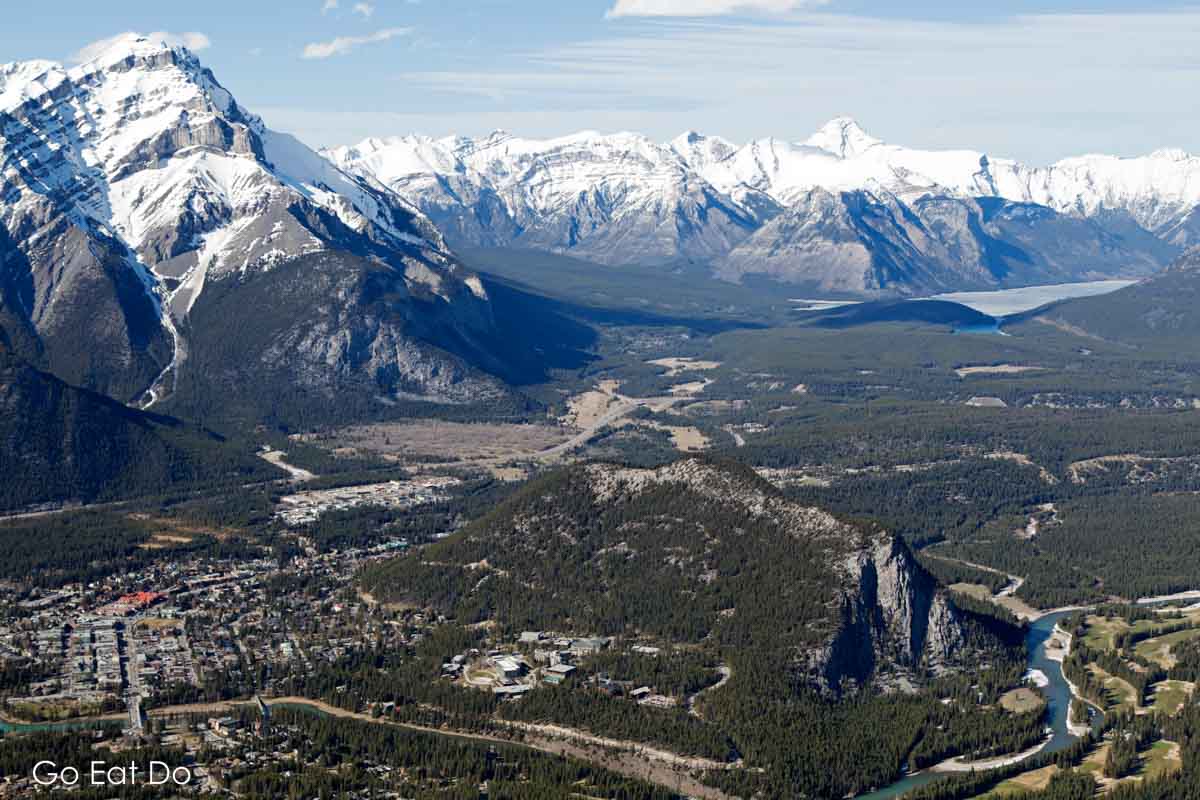
Guest Service Manager interview
“We’ve got core stories that everybody learns and, piece by piece, add our own spin,” revealed Ira Young, a Rocky Mountaineer Guest Service Manager.
“Injecting your own personality is intrinsic to the host role. A lot of the host team members identify with a particular part of the history, the geography or the flora and fauna, and add that spin to it. You have hosts that are really into wildlife – their commentary about bears, they really add a lot to that. So everybody has got their own speciality,” added Ira as we sat and chatted.
“I’m here to look after the guests and make sure all their needs are met. We’re generally responsible for two cars and oversee the house team in those cars…and ensure that any concerns or questions people have about their journey are taken care of,” he explained.
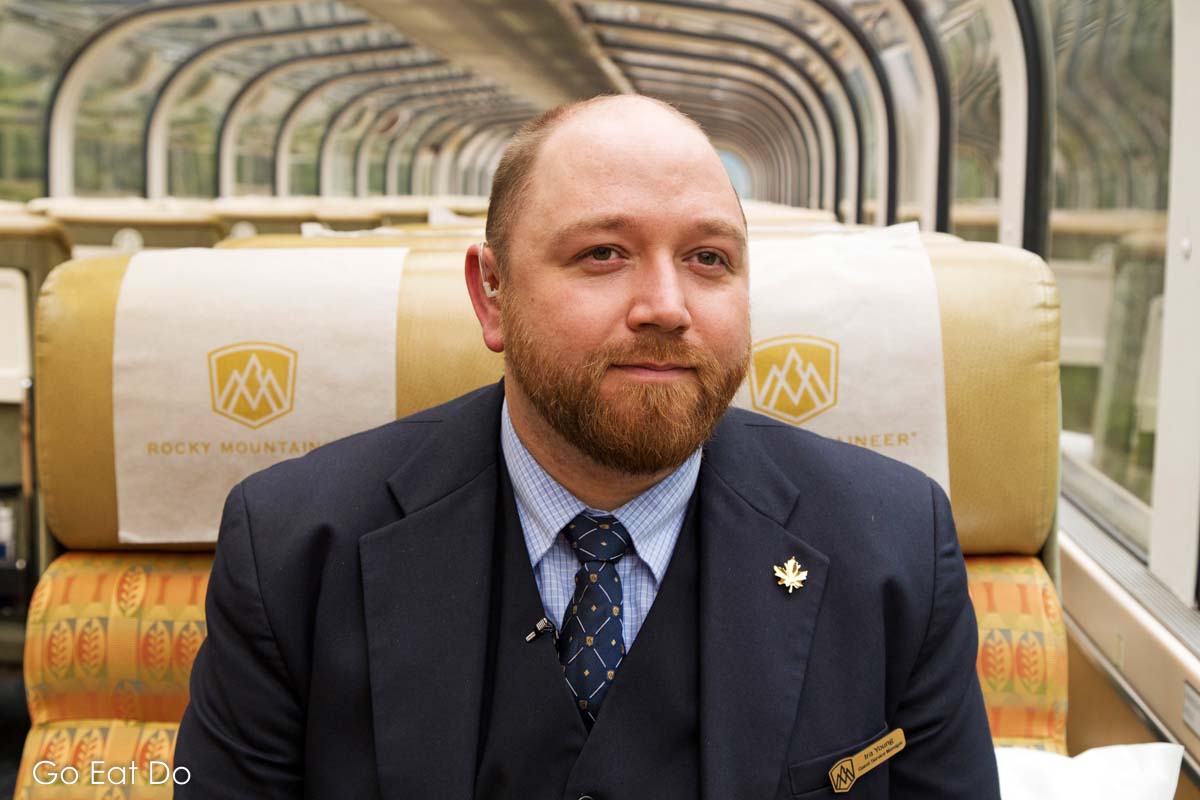
GoldLeaf and SilverLeaf on the Rocky Mountaineer
Ira began his career on the Rocky Mountaineer as a host working in both GoldLeaf and SilverLeaf cars.
SilverLeaf cars have just a single level while the GoldLeaf cars have two. Meals are served on the lower level of GoldLeaf Service cars while the upper level has dome windows providing panoramic views.
As we pulled out of Kamloops Ira picked up the mic and explained that the train had been given permission to travel at top speed over the next few kilometres of track. Travelling at top speed is known as ‘highballing’.
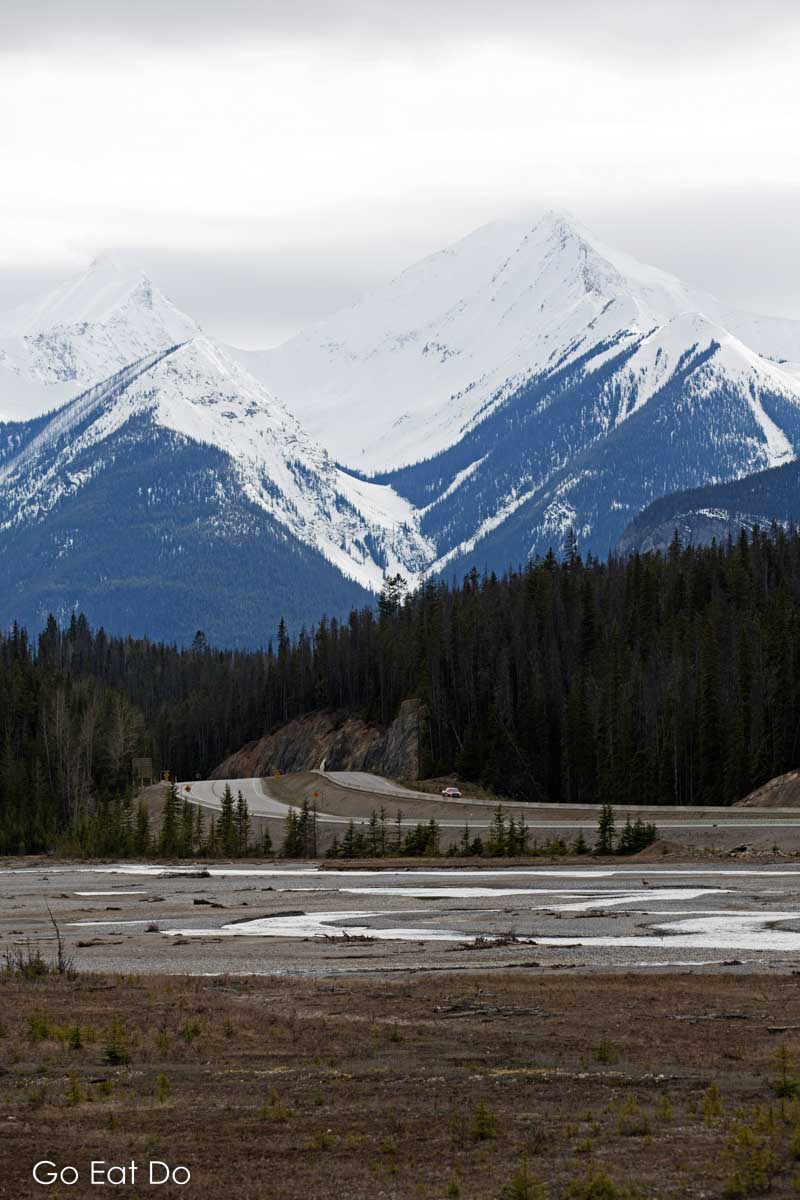
The historic rail term is derived from the signalling lanterns that, long ago, were hung at three different levels from pylons by the side of the track. If the lantern was hung from the highest one the drivers could accelerate.
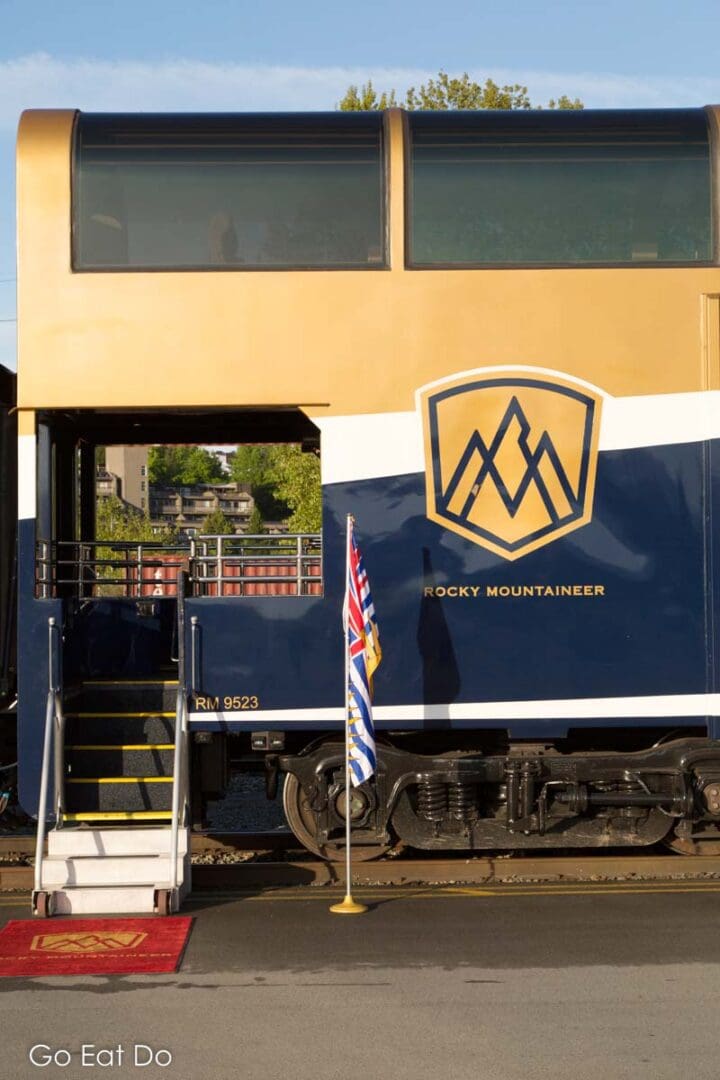
“I’m a big fan of trains. I’m named after my great-grandfather, Ira, who drove the royal train [carrying King George VI and Queen Elizabeth] across the country in 1939. Trains are in my blood,” explained Ira about his passion.
He rides trains in his free time. Outside of the Rocky Mountaineer’s April to October season, Ira has travelled to Japan to ride Shinkansen bullet trains and to see the western coast of America by train.
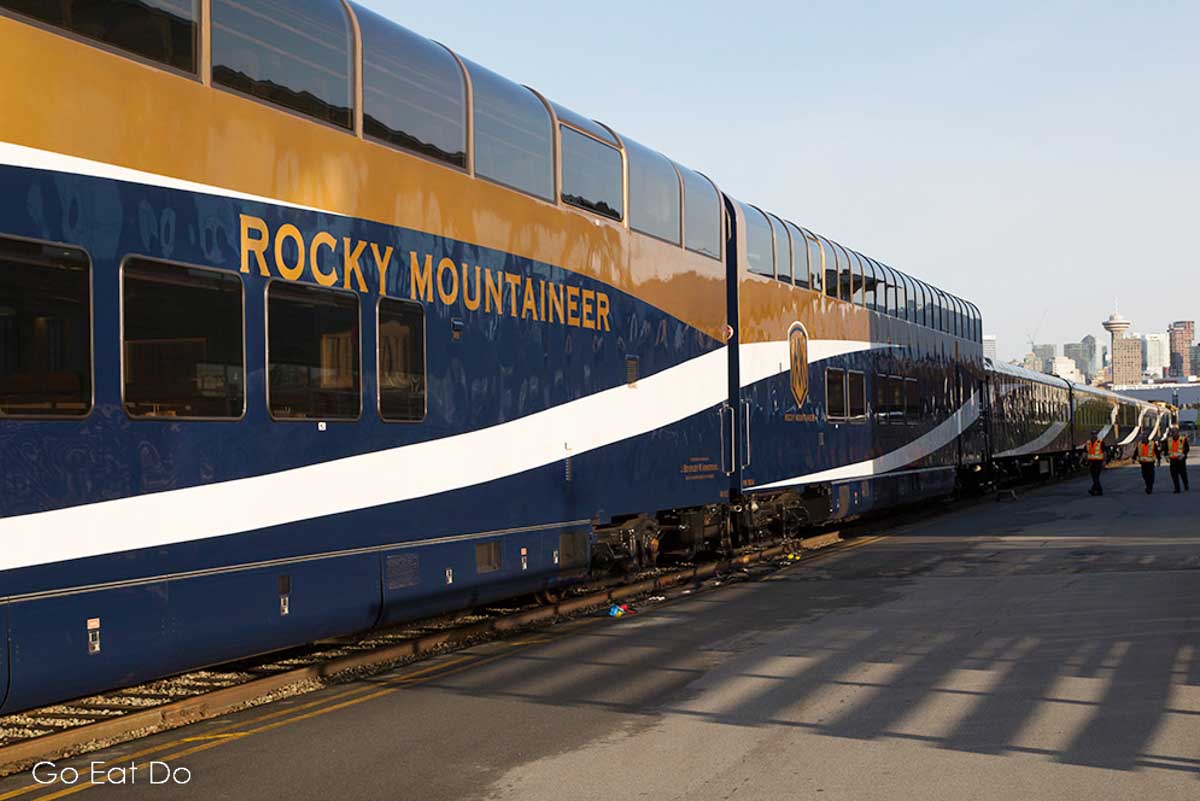
Railways in Canada
“Especially after working for Rocky Mountaineer, I realised how important the railway was to the foundation of Canada and specifically the west coast of Canada. It very easily could have gone the other way, and we could have been part of the United States, had the Canadian Pacific Railway not been built,” he said.
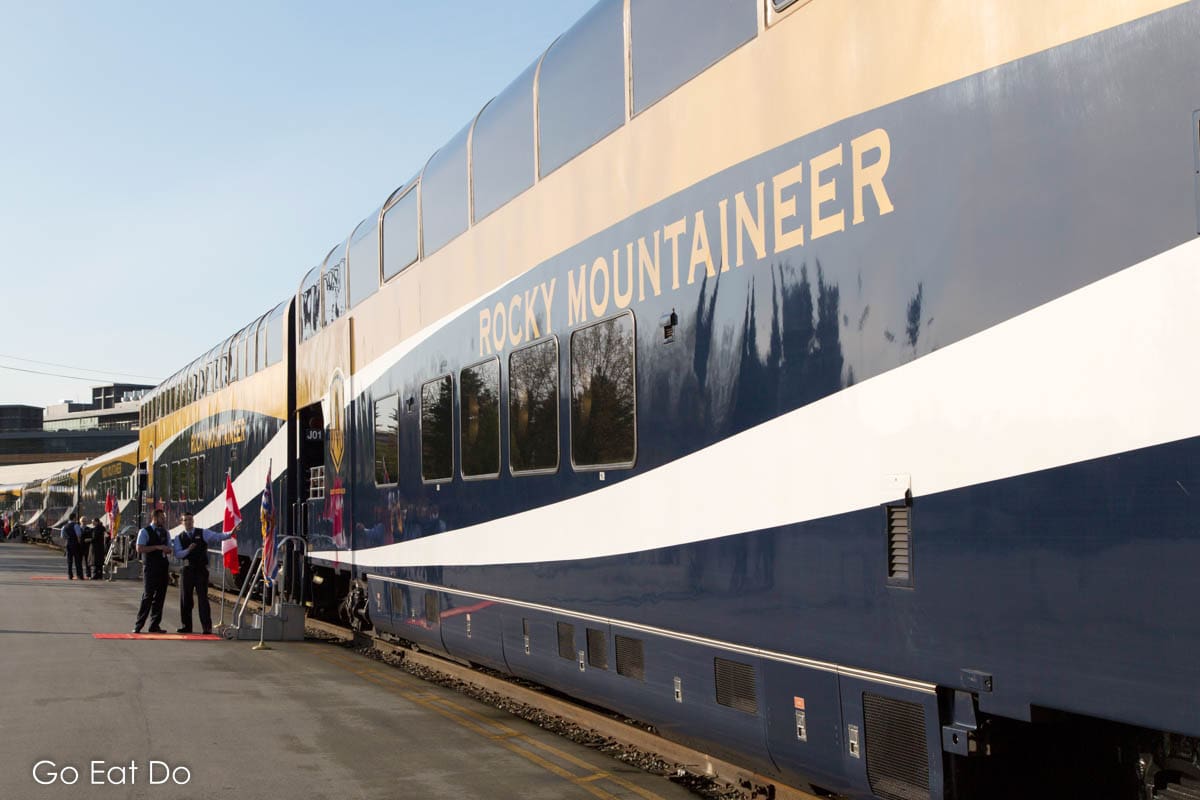
“You can see how important the railroad is to each of these communities we travel through. If you look on a map you see there are only towns along where the railway is. It’s really important to our country. That really resonates with me. We’re a relatively new country but the railroad is part of our foundation. This country was built on the rails,” said Ira pointing out of the window.
Traversing the countryside by train meant plenty of photo opportunities. They include the Cisco Crossing, the 247-metre long arched bridge where the Canadian National and Canadian Pacific Railway lines meet, plus Castle Mountain in the Rockies, which juts 2,766 metres (almost 9,075 ft) into Alberta’s sky.
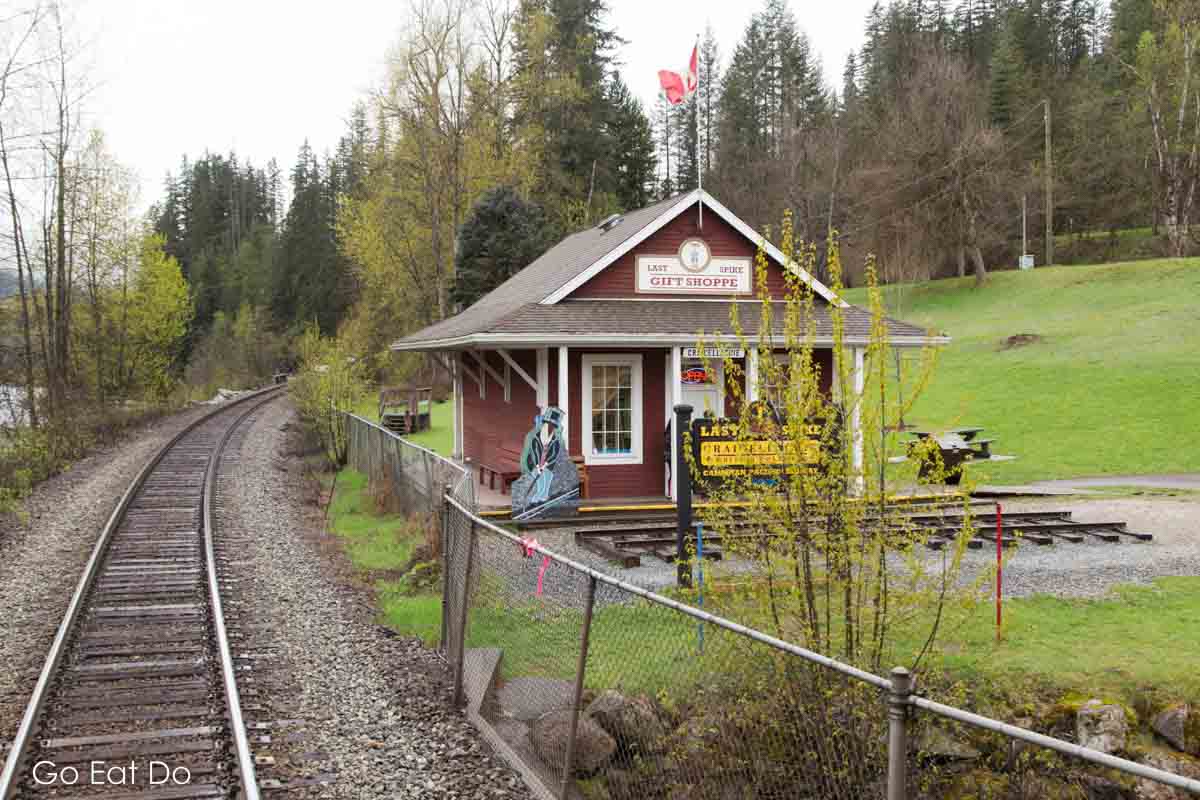
Kicking Horse Canyon’s scenery
“I really enjoy the section along the Kicking Horse Canyon as we wind along the Kicking Horse River through the Kicking Horse Pass. It’s one of my favourite spots. Another one is Pyramid Falls, on the line that goes to Jasper, just outside of a little town called Blue River, which is really famous for heli-skiing. There’s a beautiful, 90-metre waterfall right beside the tracks that can only be seen from the train,” said Ira about his favourite locations along the lines travelled by the Rocky Mountaineer.
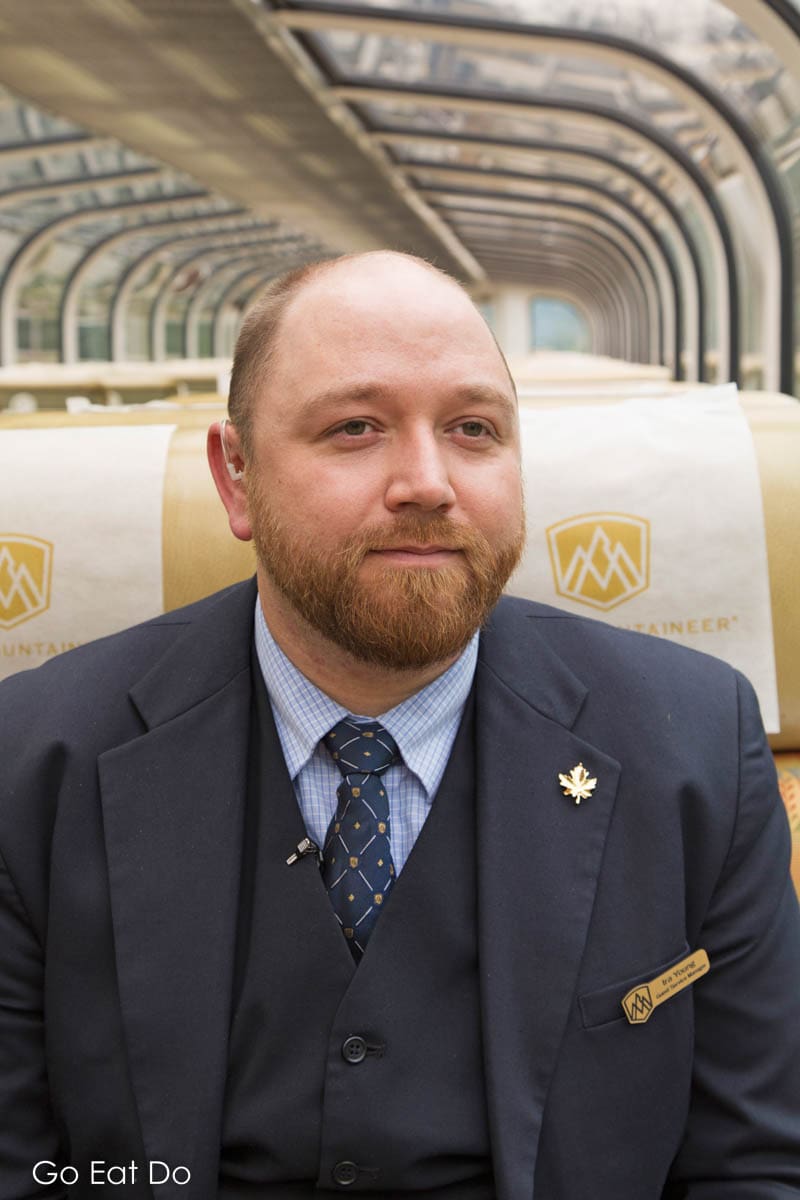
“We go through the Rockies, on the Rocky Mountaineer, but what I think a lot of people don’t realise is that we wind our way through some amazing desert canyons on the first day. They have some big sky vistas. That was a big eye-opener for me, the amount the scenery changes,” he added.
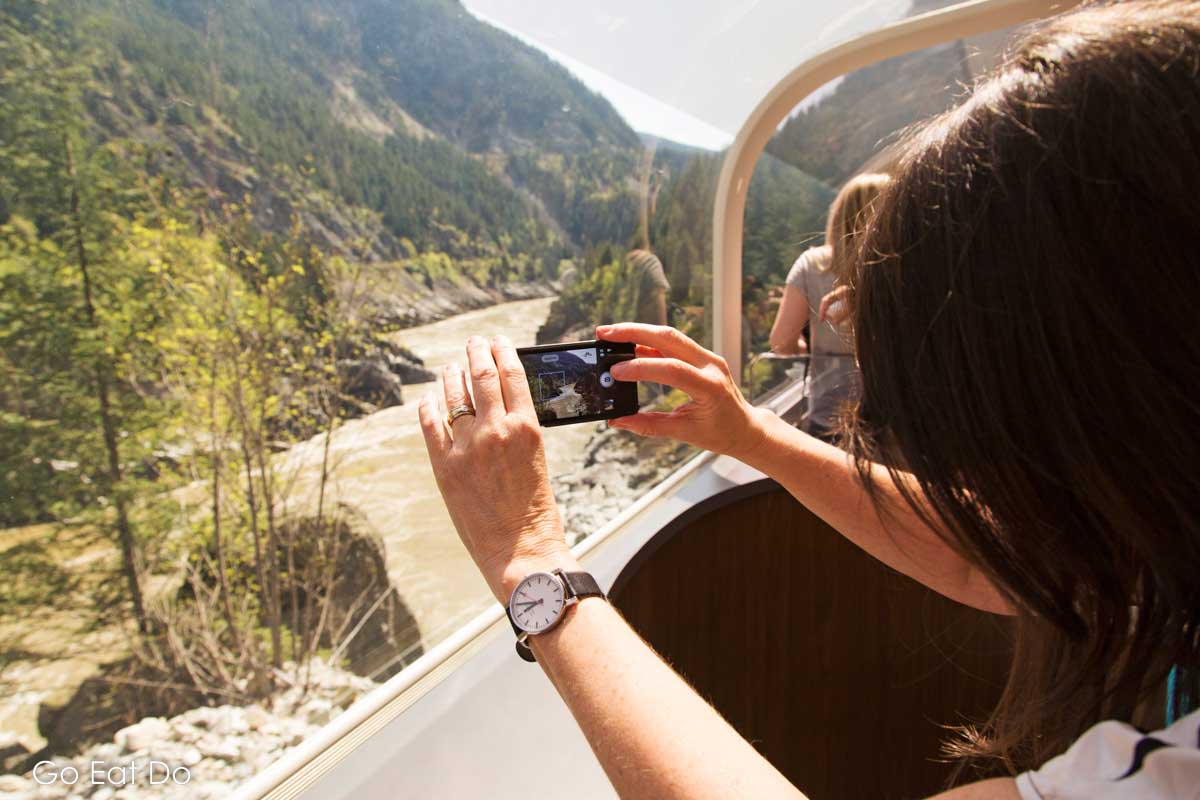
Seeing a grizzly bear from the Rocky Mountaineer
One of my favourite moments was spotting a grizzly bear walking in snow by the side of the track close to Banff National Park.
“I still get excited about seeing bears. That is one of the things I love about working here. If we see bears I’m still just as excited today as my first day onboard,” said Ira, who admits he still looks forward to coming into work.
Having viewed dramatic landscapes of western Canada from the train’s panoramic windows I can see why.

Map of the Rocky Mountaineer Station
The Google Map below shows the location of the Rocky Mountaineer Station in Vancouver, British Columbia:
Hotels in Vancouver, BC
Seeking accommodation in Vancouver. British Columbia, before or after a journey on the Rocky Mountaineer? Booking.com lists rooms available in the city:
Books about railways and western Canada
Interested in the Rocky Mountaineer? You can buy the following books from Amazon by clicking on the links or cover photos:
Train Beyond the Mountains: Journeys on the Rocky Mountaineer by Rick Antonson:

Trip of a Lifetime: The Making of the Rocky Mountaineer by Paul Grescoe:


Lonely Planet’s guidebook to British Columbia and the Canadian Rockies:


Further information
The Rocky Mountaineer runs on four separate routes in Canada and the United States of America.
The First Passage to the West runs between Vancouver and Banff, with an overnight stop in Kamloops. For more information about the train and to book a journey visit the Rocky Mountaineer website. Alternatively, call free-of-charge, on 0800 0606 7372 from the United Kingdom or +1-877-460-3200 from North America.
See the Destination Canada website for travel information about Canada and ideas about things to do and see in the country.
Stuart Forster, the author of this blog post, is a Canada expert who has written for National Geographic Traveller, Rough Guides and World Travel Magazine. He was the recipient of the 2017 British Annual Canada Travel Award for Best Online Content.
Photos illustrating this post are by Why Eye Photography.
Thank you for visiting Go Eat Do and reading this post about Rocky Mountaineer train guest services. If you enjoyed this feature, please take a look at the site’s Rocky Mountaineer train manager interview.
If you enjoyed this post why not sign up for the free Go Eat Do newsletter? It’s a hassle-free way of getting links to posts on a monthly basis.
‘Like’ the Go Eat Do Facebook page to see more photos and content.
A version of this article was originally published on Go Eat Do on 1 July 2017.
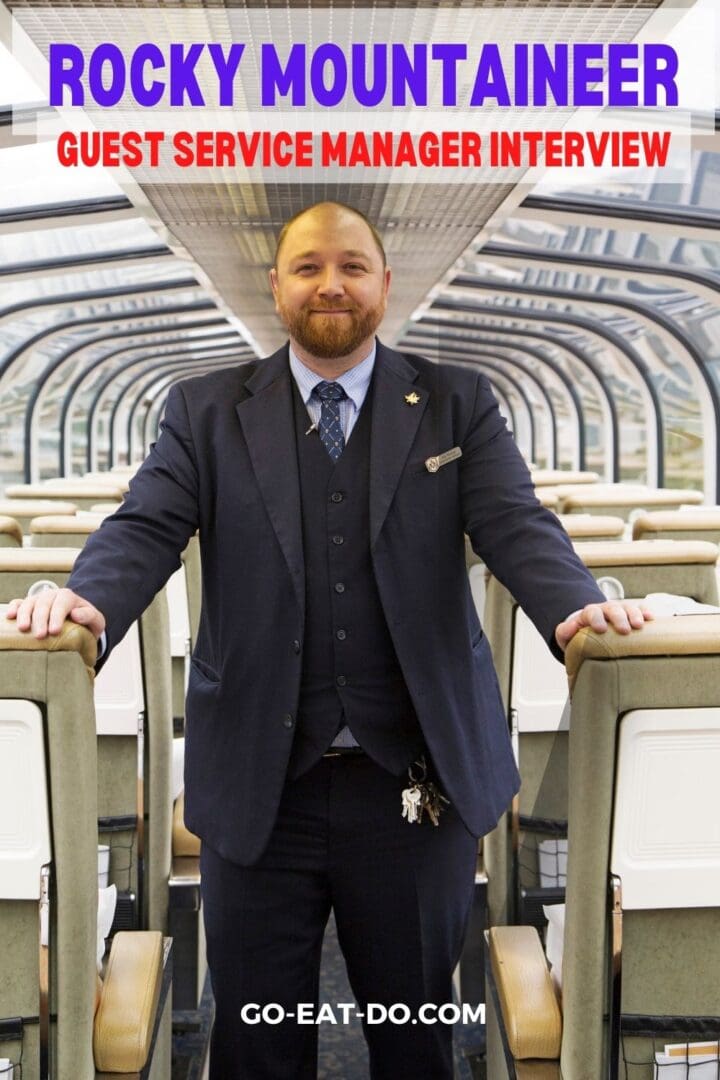



Ferne Arfin
July 1, 2017 at 19:08Makes the train journey look very tempting. And I love the idea of Kicking Horse Canyon. There must be a great story behind that name.
Thanks for posting.
Stuart Forster
July 2, 2017 at 17:13Thank you, Ferne. I’ll have to look into that but, yes, Kicking Horse Canyon is a great place name.
Kathryn Burrington
July 2, 2017 at 12:31I’d dearly love to ride one of these routes one day. My grandparents and father took the train right across Canada in the thirties on their way back to England after fleeing China. Many years later my parents went back and took a photograph of themselves standing by Lake Louise. It was only when they got back and dug out Gran’s photos that we realised we had one of Dad with Gran at the exact same spot. It must be a spot where everyone stops for a photo.
Stuart Forster
July 2, 2017 at 17:12That’s a lovely story. Hopefully you’ll do it one day. My grandmother took the Canadian, which travels across Canada, in the 1960s and there’s some great amateur film footage of her enjoying sights along the route.